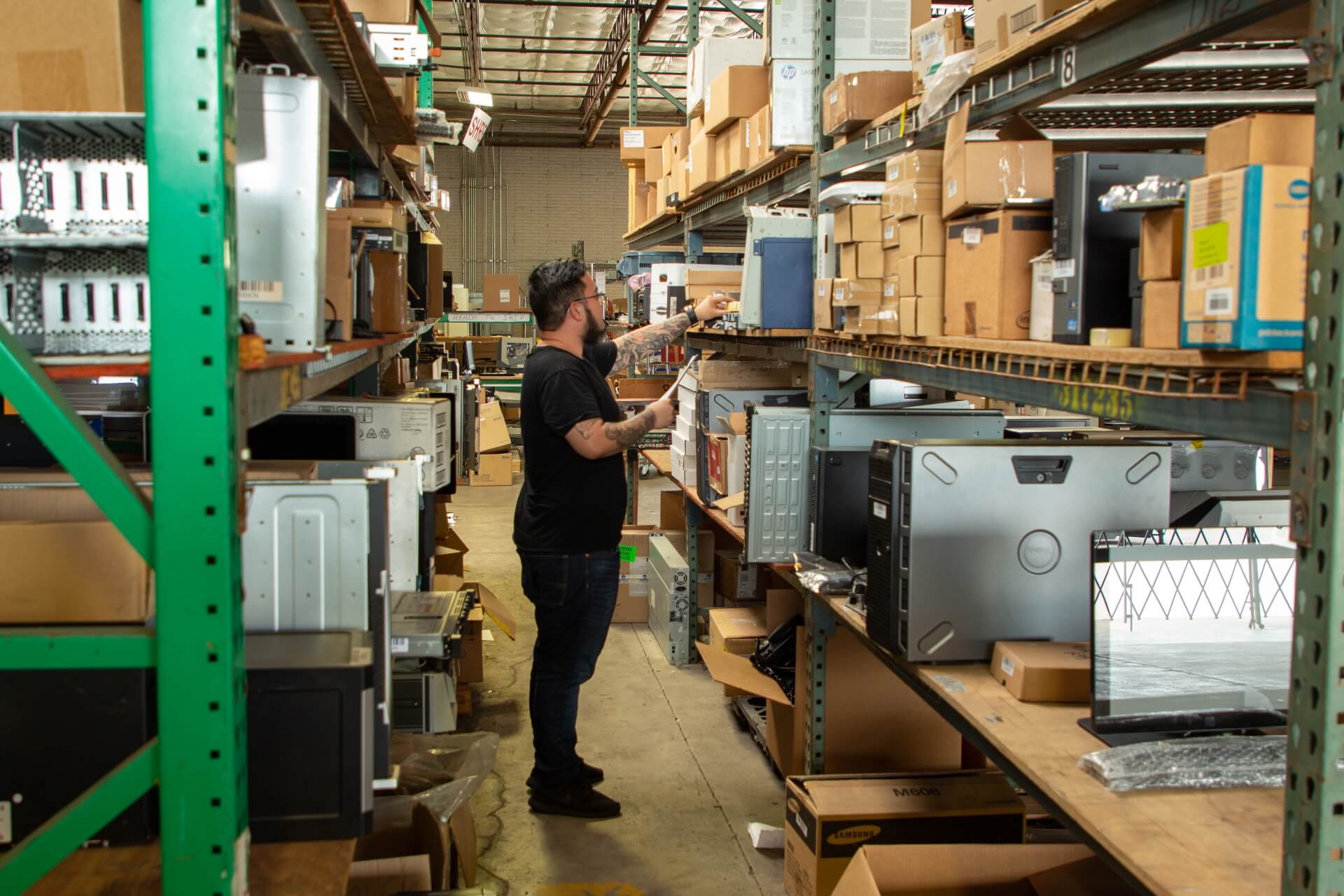Attention, computer enthusiasts and savvy sellers! Are you ready to unlock the full potential of your computer sale? Discover the best way to sell a computer and increase your profits. In this blog post, we delve into the secrets of maximizing your return on investment by employing effective strategies and expert techniques. Whether you’re a tech whiz or a casual user, we’ve covered you. Join us as we explore the intricate world of computer selling, revealing insider tips and tricks that will make your listing stand out from the competition. Get ready to embark on a journey towards maximizing your profit and achieving the success you deserve. It’s time to take action and turn your computer into cold, hard cash!
Preparing Your Computer for Sale
Cleaning and Maintenance
Before selling your computer, it’s important to ensure that it is in excellent condition internally and externally. Here are some key steps to consider:
- Cleaning the computer’s exterior: Wipe down the surfaces using a soft cloth and mild cleaning solution. Pay attention to the screen, keyboard, and casing.
- Removing dust from internal components: Use compressed air to remove any accumulated dust from the cooling fans and vents. This helps maintain optimal performance and prevents overheating.
- Cleaning the keyboard and peripherals: Remove any dirt or debris from the keyboard by gently wiping it with a soft cloth or using compressed air. Clean the mouse and other peripherals as well.
- Updating software and drivers: Ensure your computer’s operating system, software applications, and drivers are current. This improves security and enhances compatibility for potential buyers.

Backing Up Your Data
Backing up your data is crucial before selling your computer. Follow these steps to safeguard your personal information:
- Importance of data backup: Backing up your data ensures you don’t lose valuable files and personal information during selling.
- Choosing the right backup method: Select a backup method that suits your needs, such as cloud storage services, external hard drives, or network-attached storage (NAS).
- Transferring data to a new device or storage medium: If upgrading to a new computer, transfer your data securely to the new device or storage medium.
Restoring Factory Settings
Restoring your computer to its factory settings provides a clean slate for the buyer and ensures the removal of your data. Follow these steps:
- Resetting the operating system to its original state: Use the built-in recovery options or installation media to restore the computer’s operating system.
- Removing personal data and preferences: Delete all personal files, accounts, and preferences from the computer. This includes clearing browsing history, passwords, and any stored personal information.
- Ensuring a clean and fresh start for the buyer: Once the restoration process is complete, the computer will be ready for the buyer to set up and personalize according to their needs.
Researching the Market
Before listing your computer for sale, it’s essential to research the market to determine its value, identify your target audience and platforms, and analyze your competitors.
Assessing the Value of Your Computer
To determine the value of your computer, consider the following factors:
- Evaluating the specifications and condition: Assess the hardware specifications, such as processor, RAM, storage capacity, and graphics card. Take into account the condition of the computer, including any wear and tear.
- Checking current market prices: Research similar computer models on online marketplaces and check their prices to get an idea of the market value.
- Considering depreciation and age factors: Understand that computers depreciate over time, so factor in the age of your device when determining its value.
Identifying Target Audience and Platforms
Identifying your target audience helps tailor your listing to their specific needs. Consider the following:
- Determining the potential buyer demographic: Consider who would be interested in purchasing your computer. Is it suitable for gamers, students, professionals, or general users?
- Selecting suitable online platforms for listing: Choose reputable online marketplaces, classifieds, or forums where your target audience is likely to search for computers.
- Researching local options for offline sales: Explore local options, such as computer stores or classified ads in newspapers, to reach potential buyers in your area.
Analyzing Competitors
Analyzing your competitors’ listings and pricing strategies can give you insights into the market. Consider the following:
- Researching similar listings and their pricing: Look for listings of computers with similar specifications to yours and analyze their pricing strategies.
- Understanding the unique selling points of competitors: Identify the features or benefits highlighted by your competitors to understand what sets your computer apart.
- Differentiating your computer from others on the market: Highlight the unique features, upgrades, or additional accessories that make your computer stand out from the competition.
Creating a Compelling Listing
Writing an Attention-Grabbing Title
The title of your listing plays a crucial role in attracting potential buyers. Consider the following tips:
- Using descriptive and engaging language: Craft a title that clearly describes the computer and grabs the attention of potential buyers.
- Highlighting key features and specifications: Include important specifications, such as processor speed, RAM capacity, and storage size, in the title to attract relevant buyers.
- Using keywords for search engine optimization (SEO): Incorporate relevant keywords in the title to improve your listing’s visibility in search results.
Crafting a Detailed and Honest Description
A well-written and detailed description helps potential buyers understand the value of your computer. Follow these guidelines:
- Providing accurate information about the computer: Describe the computer’s specifications, condition, and any notable features accurately.
- Highlighting unique selling points and benefits: Emphasize the aspects that make your computer desirable, such as upgraded components, high-quality display, or specialized software.
- Including any additional accessories or software: Mention any included accessories, such as a keyboard, mouse, or software license, to enhance the value proposition.
Using High-Quality Visuals
Visuals are essential for attracting potential buyers and showcasing your computer. Consider the following:
- Taking clear and well-lit photographs of the computer: Capture high-resolution images that accurately represent the computer’s condition.
- Capturing different angles and close-up shots: Provide a comprehensive view of the computer, including its ports, keyboard, and screen.
- Showcasing any included accessories or peripherals: Include images of any accessories, peripherals, or cables that come with the computer to entice buyers.
Setting the Right Price
Determining the right price for your computer is crucial for maximizing profit while remaining competitive.
Considering Market Value and Demand
When setting the price, take the following factors into account:
- Adjusting the price based on current market trends: Monitor the market and adjust your price to reflect changes in demand and supply.
- Factoring in demand for similar computers: If there is a high demand for computers with specifications similar to yours, you may be able to set a slightly higher price.
- Determining a competitive yet profitable price point: Strike a balance between profitability and competitiveness to attract potential buyers.
Offering Negotiation Room
Leaving room for negotiation can help you close the deal at a satisfactory price. Consider these tips:
- Pricing the computer slightly higher than desired: Set the initial price slightly higher than your target to allow for negotiation.
- Being open to negotiation with potential buyers: Engage in a constructive dialogue with interested buyers and be willing to negotiate within a reasonable range.
- Setting a minimum acceptable price to avoid losses: Determine the lowest price you’re willing to accept to avoid selling at a loss.
Bundling and Upselling
Increasing the perceived value of your computer can justify a higher price. Consider these strategies:
- Creating package deals with accessories or software: Bundle additional accessories or software with the computer to offer a complete package.
- Offering additional services or warranties for a higher price: Provide extended warranties or technical support services to entice buyers.
- Increasing perceived value through upselling strategies: Highlight the benefits of upgrading components or adding more RAM or storage capacity to increase the value proposition.
Promoting Your Listing
You need to promote your listing effectively to reach a wider audience and attract potential buyers.
Writing Compelling Ad Copy
Crafting an engaging and persuasive ad copy is essential to capture potential buyers’ attention. Consider the following tips:
- Crafting an engaging introduction: Begin with a captivating introduction that generates curiosity and interest.
- Highlighting key features and benefits: Clearly communicate your computer’s unique features and benefits in a compelling manner.
- Including a clear call-to-action for potential buyers: Prompt potential buyers to take action, such as contacting you for more information or making an offer.
Utilizing Social Media and Online Communities
Leverage the power of social media and online communities to expand your reach. Follow these strategies:
- Sharing the listing on relevant social media platforms: Share your listing on platforms like Facebook, Twitter, or LinkedIn to reach a broader audience.
- Joining online communities and forums for computer enthusiasts: Participate in relevant forums or communities to engage with potential buyers and address their queries.
- Engaging with potential buyers through comments and messages: Respond promptly to comments and messages to build trust and establish a rapport with potential buyers.
Utilizing Online Marketplaces and Classifieds
Listing your computer on popular online marketplaces and classifieds can increase its visibility. Consider these steps:
- Listing the computer on popular online marketplaces: Choose reputable platforms like eBay, Amazon, or Craigslist to list your computer.
- Optimizing the listing with appropriate keywords and tags: Use relevant keywords and tags to improve the discoverability of your listing within the marketplace’s search algorithm.
- Responding promptly to inquiries and potential buyers: Be responsive to inquiries, provide additional information, and answer questions to keep potential buyers engaged.
Managing Inquiries and Negotiations
Effectively managing inquiries and negotiations is crucial to seal the deal with potential buyers.
Responding Promptly and Professionally
Timely and professional responses demonstrate your commitment to the selling process. Consider the following tips:
- Checking and responding to inquiries regularly: Make it a habit to check your messages and emails frequently to respond promptly to potential buyers.
- Providing detailed answers to potential buyer questions: Address all inquiries with comprehensive and accurate information to build trust and confidence.
- Maintaining a professional and friendly tone: Ensure your communication remains professional, yet friendly and approachable.
Handling Negotiations and Counteroffers
Negotiating the price effectively can lead to a successful sale. Consider these strategies:
- Evaluating counteroffers based on market conditions: Assess counteroffers based on the prevailing market conditions and the value of your computer.
- Negotiating the price while maintaining profitability: Engage in a constructive negotiation process while ensuring the final price is still profitable.
- Keeping potential buyers engaged and interested: Communicate actively with potential buyers during negotiations to maintain their interest and commitment.
Setting Up Safe Meeting and Transaction Locations
Ensuring safety during in-person meetings and transactions is vital. Follow these safety measures:
- Choosing public and secure locations for in-person meetings: Select public places with surveillance cameras, such as coffee shops or shopping malls, for in-person meetings.
- Arranging safe payment and transaction methods: Opt for secure payment methods, such as cash on delivery, bank transfers, or reputable online payment platforms.
- Avoiding scams and potential risks during the selling process: Stay vigilant and be cautious of potential scams or fraudulent activities. Verify the buyer’s identity and only proceed with trusted transactions.
Finalizing the Sale
Once you’ve found a potential buyer, ensuring a smooth and satisfactory transaction is important.
Properly Packaging the Computer
Proper packaging ensures that the computer arrives safely and in the expected condition. Follow these guidelines:
- Using appropriate packaging materials: Use sturdy packaging materials like bubble wrap and foam to protect the computer during transit.
- Ensuring the computer’s safety during transit: Securely pack the computer to prevent any damage that may occur during shipping.
Shipping and Delivery Options
Choosing the right shipping and delivery options is crucial for a successful sale. Consider the following:
- Choosing the right shipping method: Select a reliable and trackable shipping method that ensures the safe delivery of the computer.
- Providing tracking information to the buyer: Share the tracking details with the buyer so they can monitor the shipment’s progress.
- Ensuring timely and secure delivery: Take necessary precautions to ensure the computer is delivered promptly and securely.
Confirming Receipt and Providing After-Sale Support
Confirm the buyer’s satisfaction after the sale is finalized and offer support if needed. Consider these steps:
- Following up with the buyer after delivery: Reach out to the buyer to confirm the receipt of the computer and inquire about their satisfaction.
- Confirming the buyer’s satisfaction: Ensure the buyer is satisfied with the purchased computer and address any concerns or issues they may have.
- Offering assistance and support if needed: Provide post-sale support, such as answering questions or providing guidance on setting up the computer.
In conclusion, maximizing your profit when selling a computer requires careful preparation, market research, compelling listing, setting the right price, effective promotion, managing inquiries and negotiations, and professionally finalizing the sale. By following these steps and employing effective strategies, you can increase your chances of selling your computer at the best possible price. Remember to provide accurate information, engage potential buyers, and prioritize their satisfaction for a successful selling experience.







